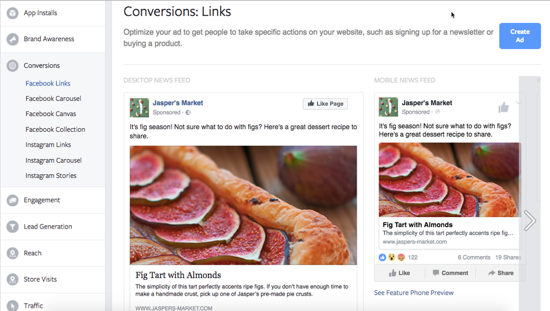Using social media advertising to generate leads
When you think about generating leads, social media probably isn’t the first thing that comes to mind. After all, no one really buys a product because of a tweet, right?
Wrong!
Social media isn’t just an effective tool to grow brand awareness and a social media following. When done right, and when you’re also willing to invest in ad campaigns, you can use platforms like Twitter, Facebook, LinkedIn and Instagram to generate leads for your small business.
In this post we’ll explain how to use social media advertising to turn your fans and followers into leads.
But first…
Lead generation isn’t the same as selling
Lead generation is about getting people into your sales funnel. It’s about gathering information and insights into your customers, and learning more about:
- What they’re interested in
- What their problems and needs are
- Which of your products they might be interested in buying
- How you can turn them into paying customers
A while ago, businesses would generate leads by sending out surveys in the mail. But the Internet has changed the way businesses get leads.
Now it’s all about email opt-ins and paid ad campaigns that are aimed that bringing more people into your sales funnel.
Social media makes the process even easier and more effective because of all the information that people share on platforms like Facebook and Twitter. That makes social media the ideal place to find your target audience and turn them into leads.
Here’s how you can do it.
Define your audience
Before you invest in paid ad campaigns on social media, you first need to define the people you want to reach. Which social networks are they using? What are their interests? What questions and concerns do they have? What sites, blogs, influencers do they follow? And when digesting content online, do they prefer blog posts, videos or infographics?
Knowing who your audience is and what they want is the first step to creating a social media advertising strategy that gets results.
You can find lots of useful information about your audience in your Google Analytics account, such as:
- Which countries your visitors are coming from: Audience-> Geo -> Location
- What are the most popular pages on your site. This tells you what people are most interested in: Behaviour -> Site Content -> Landing Pages
- What type of social media content gets the most engagement (by number of comments, shares, likes): Acquisition -> Social
If you haven’t already signed up for Google Analytics, do it now. You can create an account here, and if you want to get familiarised and learn more about how to set everything up, and what other great information you can access through this tool, take our free Google Analytics course.
Pick the right channels
One of the costliest mistakes you can make is advertising on the wrong social media channels. That’s why it’s so important to learn more about your target audience and where they’re spending time online.
It’s easy to assume that popular platforms like Facebook and Twitter that so many businesses are using to connect with their audiences should also be your go-to choice. But what if they’re not? What if your customers aren’t using those, and they prefer Instagram or Snapchat instead?
If you’re not sure which social network your target demographic is on, check out this infographic which breaks down the user bases of the top social media channels.
And if you want to get a better understanding of how each social network works, this blog post walks you through the most popular ones so you can determine which channels best match the needs of your business.
Ways to use social media advertising to generate leads
Now that you know who your audience is and where you can reach them, let’s look at how you can turn them into leads using social media advertising.
There are three types of ad campaigns you can run on social media:
- Pay-per-click
- Pay-per-conversion
- Pay-per-lead
Let’s look at how they work and how to use them to turn followers into leads.
1. Pay-per-click
The easiest and most popular way to generate leads through social media advertising is with pay-per-click (PPC) campaigns. With PPC, you pay each time someone clicks on your ad and visits your site.
Here are a few tips to consider:
Optimise your landing page to collect lead information. Make sure the page you’re sending people to is related to your ad content. For example, if the purpose of your ad is to entice people to download an ebook, then you should link the ad to a dedicated page where you tell more about it, why they should download it and how (usually by providing their information like name and email address).
Include pictures and videos to make your ads and landing pages more personal.
Here’s an example:
Use your most engaging social content as a template for ads. People are more receptive to ads that resemble organic native content, so use those to convert users into leads.
Add a clear and powerful call-to-action (CTA). A relevant ad is great but without a strong CTA, people might not know what to do next. So add a CTA like “Sign up now” or “Offer ends soon” to add a sense of urgency to your ad. Your CTA should encourage people to click on your ad now.
Create different landing pages for each social media channel. Each social network is different when it comes to targeting. Facebook users are informal and enjoy a fun, more personal approach while LinkedIn users are business-oriented, which means your content should be professional and educational.
- Advertising on Twitter? On Twitter, ads with images and videos are winners. You can use Twitter cards to promote testimonials or reviews from customers or top influencers.
- Advertising on Facebook? Here are four good ways to create Facebook ad and landing page combos to get better results.
- Advertising on LinkedIn? Since this platform is dedicated to professionals, your ads should promote data-driven content and other types of educational content that users find useful, such as white papers, in-depth case studies and interviews with experts in the industry.
Schedule your ads in a way that complements your organic content. After you create your social advertising campaigns, schedule your ads to go live alongside organic posts. Also, make sure you engage with your following via social ads just as would with your organic posts.
2. Pay-per-conversion
Also known as per-per-action (PPA), with these ad campaigns you pay each time a user completes a specific action such as filling out and submitting a form, instead of just clicking your ad.
For example, Facebook’s Conversions Links option allows you to create ad campaigns that entice people to take action, whether it’s to sign up for your newsletter, get in touch with you via your contact form or buy a product.
3. Pay-per-lead
With pay-per-lead campaigns, users can submit information directly within the ad, rather than clicking through to a landing page on your site and filling out a form. That’s because the information is automatically filled in using their social media account details so it’s faster.
Here’s how to get started with leads ads on Facebook. Also check out this great tutorial on how to use Twitter’s lead generation cards.
If you want more in-depth information and steps to creating ad campaigns on social media you should sign up to take our free course on Social Media Advertising. In it you’ll find all the steps to setting up ad campaigns on Facebook and Twitter, including the different ad types you can choose from, how to target your ads and also how to track and measure the results.
Wrapping up
If you’re still using social media only to increase brand awareness, it’s time to step up your game and start using them to generate leads.
How are you using social media advertising for lead generation? Share your best tips with us @123Reg.










